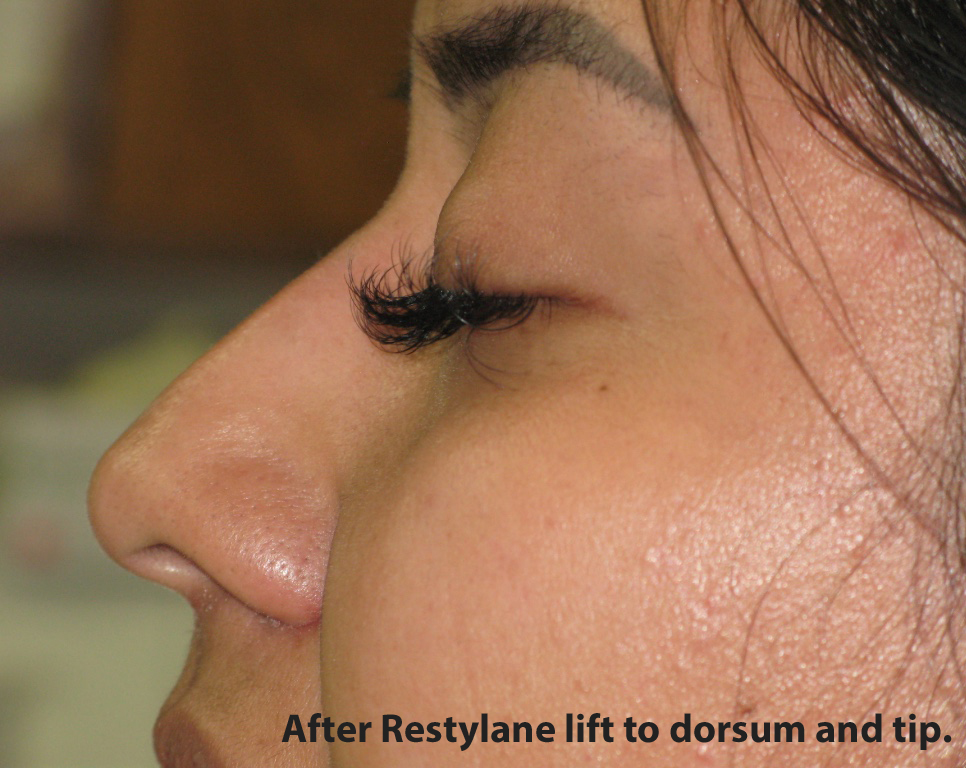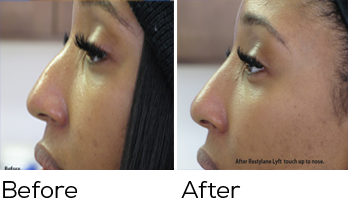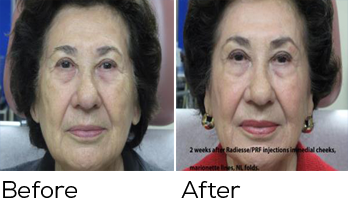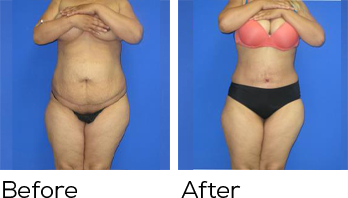Nasal defect correction is becoming more popular, as surgical rhinoplasty is in the top 5 performed cosmetic procedures in the U.S. Patients are now seeking minimally invasive procedures to correct those deformities.
Nasal reshaping with fillers, mostly hyaluronic acid or HA has been gaining popularity.
With HA fillers, small boluses are creating 3-dimensional reshaping by adding volume only. The HA can be thought of a cartilage graft added to specific areas to the nose to create the desired change.
The important nasal features are seen in profile. When H.A. fillers are used, one tries to obtain the angles below. When using fillers, product can be added and size cannot be reduced as with a surgical rhinoplasty.
Figure 1. Diagram of nasal angles. Below are the frontal-nasal which should be 115-130 degrees and the labial-nasal angle which should be 95-105 degrees.
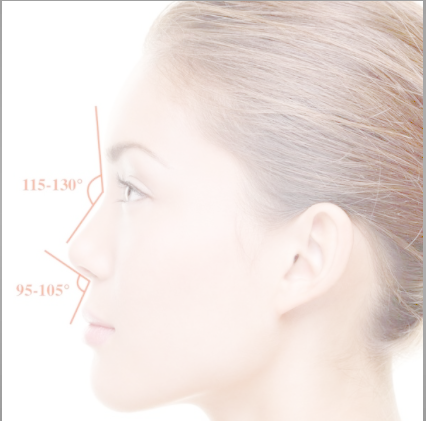
Common areas of concerns for patients include correction of a dorsal hump.
This can be corrected by placing filler in the dorsum. A cannula can be used in this area, but sometimes the filler flows into the lateral portion of the nose. The nasion is the deepest part of the nasofrontal angle. Filling in this area usually camouflages the hump.
The following patient is a good example of having the dorsal hump correction by placing small aliquots starting at the nasion to correct appearance of a hump. The tip was also elevated slightly to keep the supertip break normal.
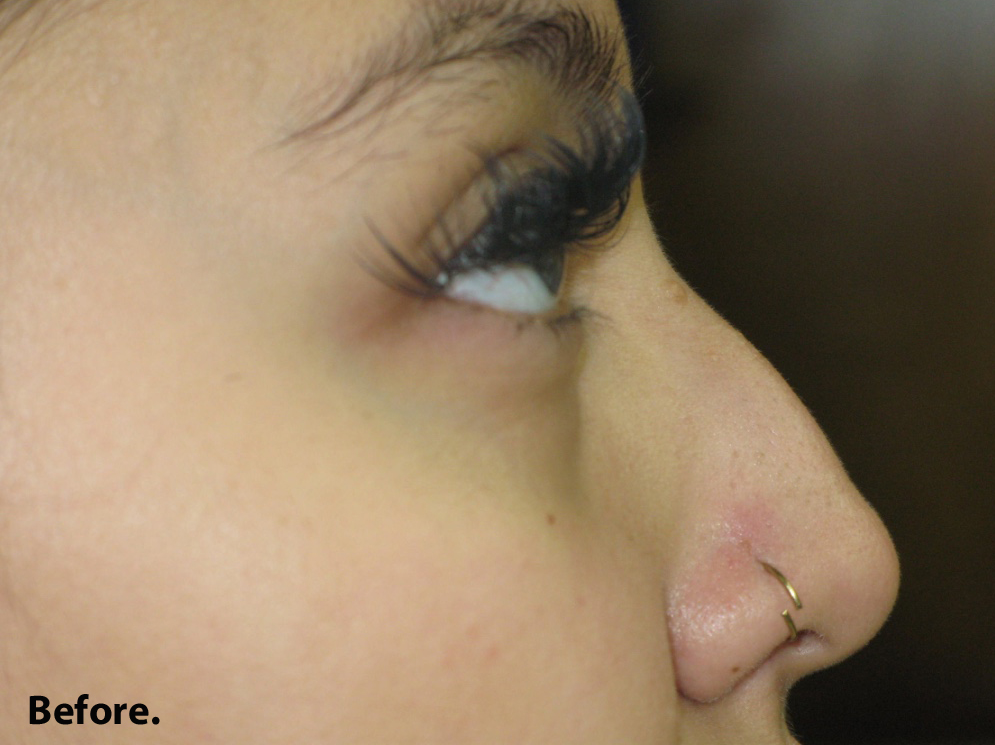
Actual patient with 0.6 cc of lift placed in dorsum and tip of nose.
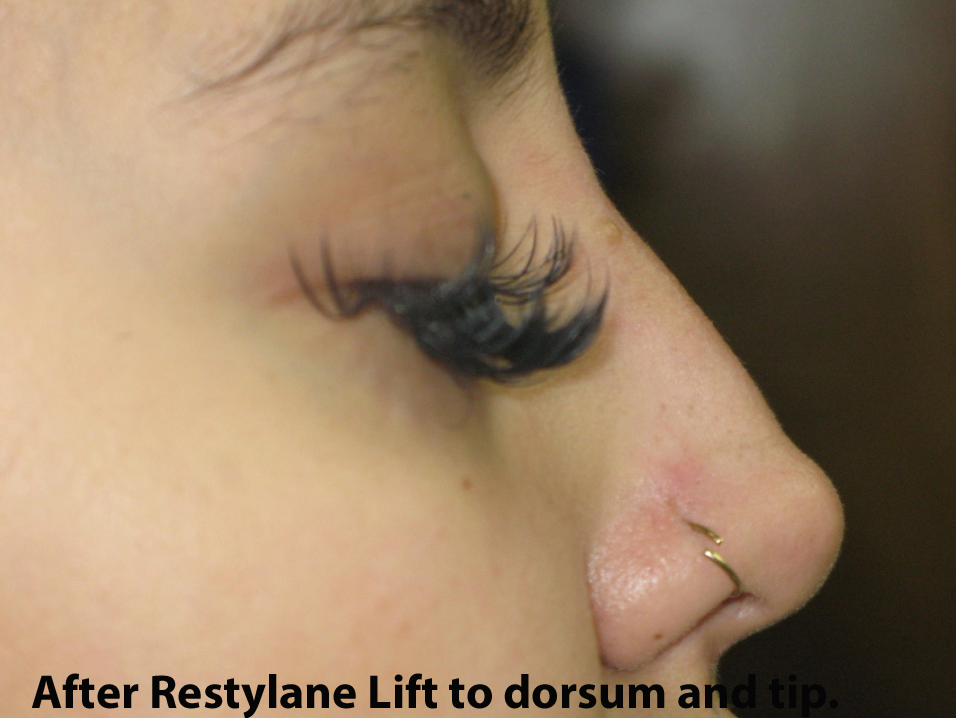
Another common area of concern is tip elevation. The five main characteristics of the tip include the suprattip break, the lobulocolummellar angle, the collumellar-lobular ratio, and the nasalabial angle.
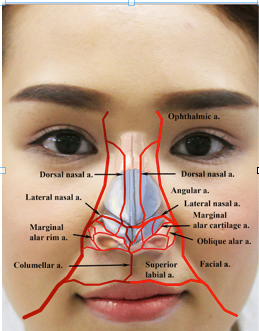
The tip is the most complex to correct. One can inject several areas to simulate cartilage grafts which provide support and change the appearance of the nasal tip by elevating it. One area filler is placed inferiorly is between the nasal spine and the columella. This submuscular injection will elevate the tip and provide support along with lengthening the depressor nasi septi muscle. This will reduce how much the tip retracts with smiling. Aliquots can also be placed in the columella and in the tip on the cartilage. Occasionally, more than one session may be required for optimal correction.
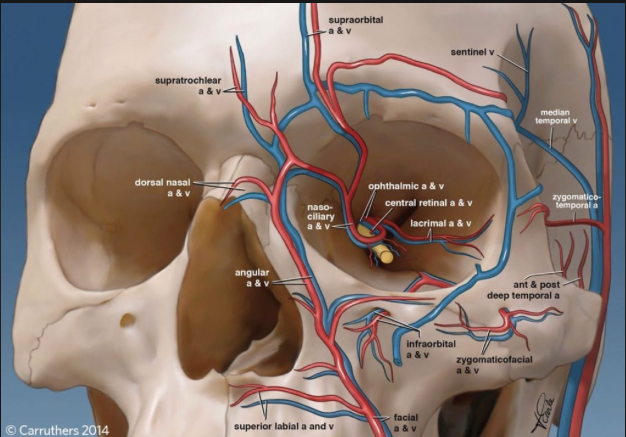
The blood supply to the nose is from the internal and external carotid arteries which include branches of the ophthalmic and facial arteries. The proximal blood supply to the nose has connections with the central retinal artery. Intra-arterial injections in the radix or dorsum can cause retrograde flow into the central retinal artery and cause blindness or stroke. One needs to be careful when injecting this area. Injection should be just pre-perichondrial or pre-periosteal. The larger vessels run above the muscle level and are more superficial distally. One should aspirate, inject slowly with minimal pressure and watch for blanching. It should resolve in 30-60 seconds with message or else one needs to dissolve it to avoid external arterial compression which can occur with tip injections.
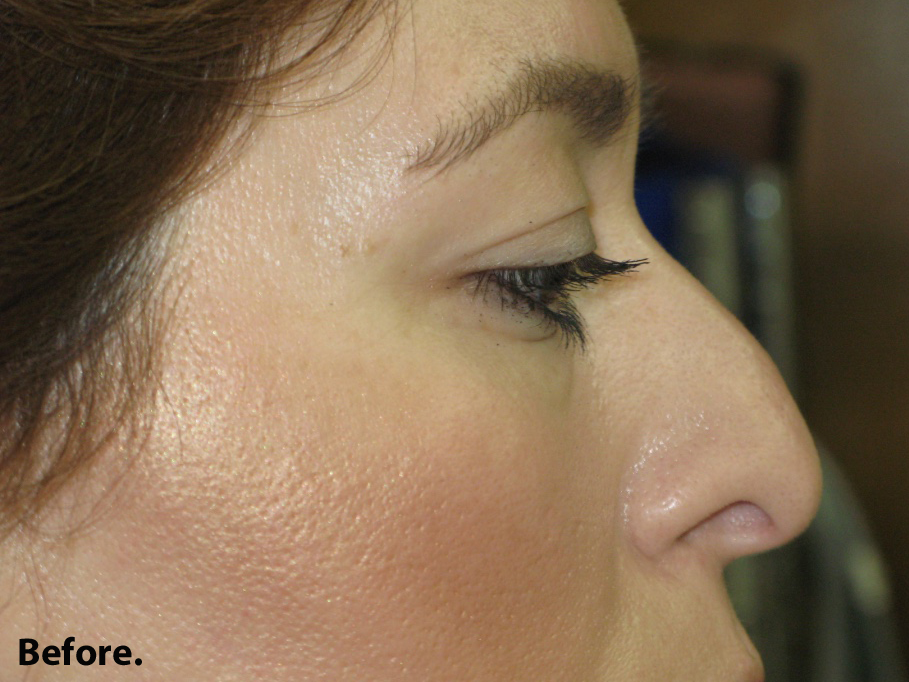
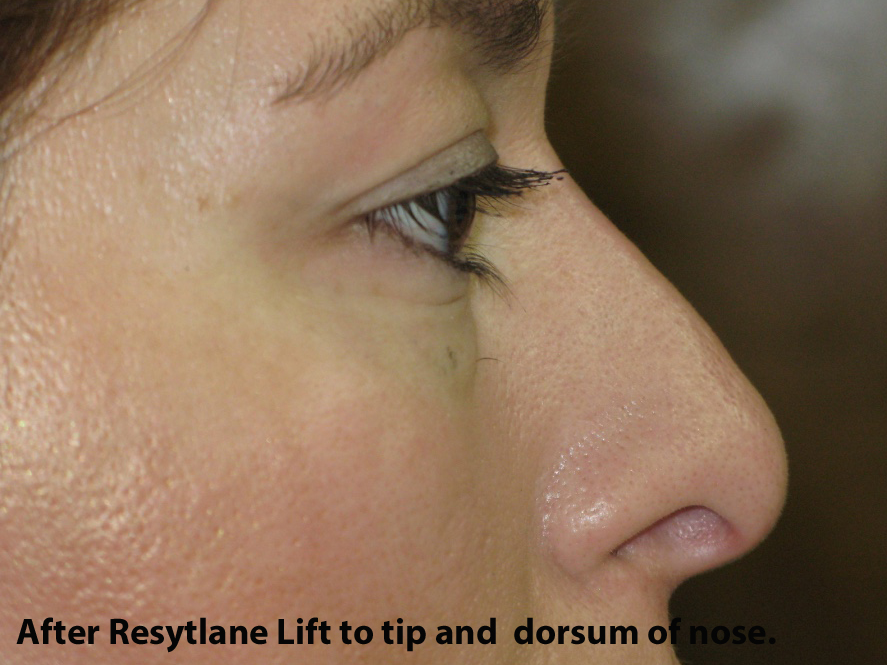
Since nonsurgical rhinoplasty has gained popularity to treat both operated and non-operated noses; detailed knowledge of the nasal anatomy is extremely important to prevent complications such as infections, vascular compromise, blindness and necrosis. When injecting with needles, the subdermal course should be minimized and the least amount of injections should be used to obtain adequate reshaping. Adequate time must pass to allow for a positive aspiration and slow meticulous injections should be performed with minimal pressure. If blanching occurs it should resolve within 30-60 seconds with message. Hyaluronidase may be injected if blanching persist to reverse increase interstitial pressure which will prevent reduced capillary perfusion or external arterial compression. Care must be taken when injecting patients with previous rhinoplasties that have deformities. There could be vascular compromise and increasing scarring. It is always best to wait at least one year after surgery before injecting noses with fillers.
Most filler last close to a year or longer in most patients. Subsequent treatments require less filler which might be due to increase collagen remodeling or a lower degradation rate.
In conclusion, nonsurgical rhinoplasty done correctly has been shown to be safe, effective and reliable with high patient satisfaction and minimal downtime.
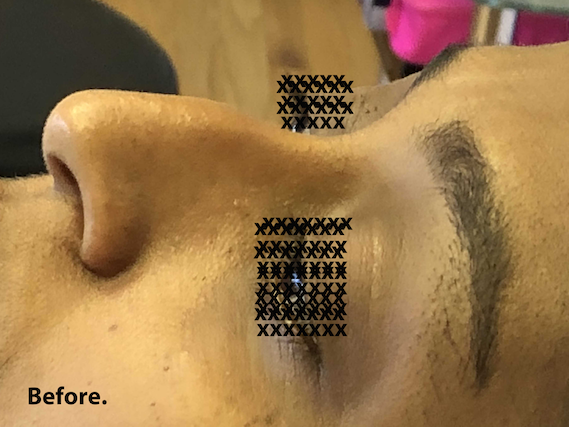
After 1.5 cc of Lift placed over 2 sessions.
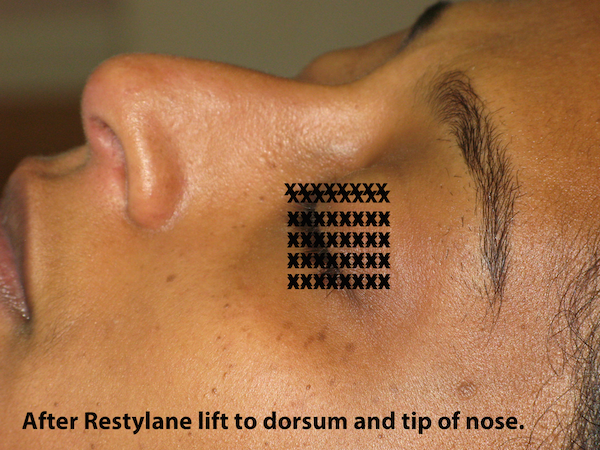
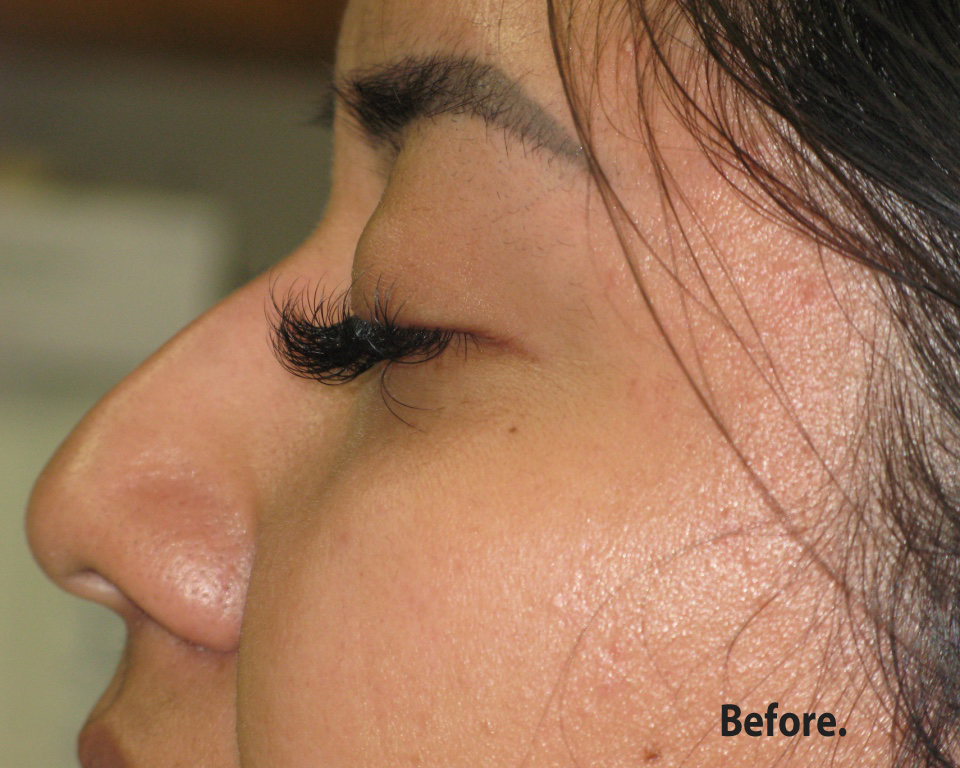
After lift placed in dorsum, tip and pyriform fossa to narrow nose.
